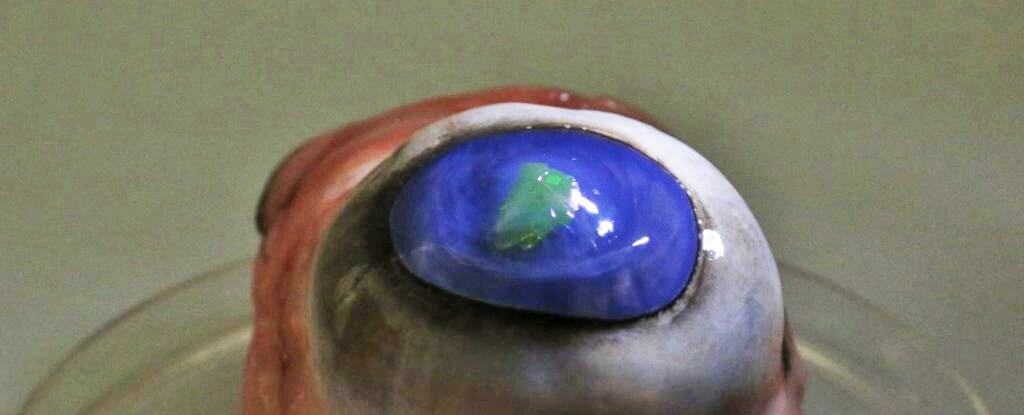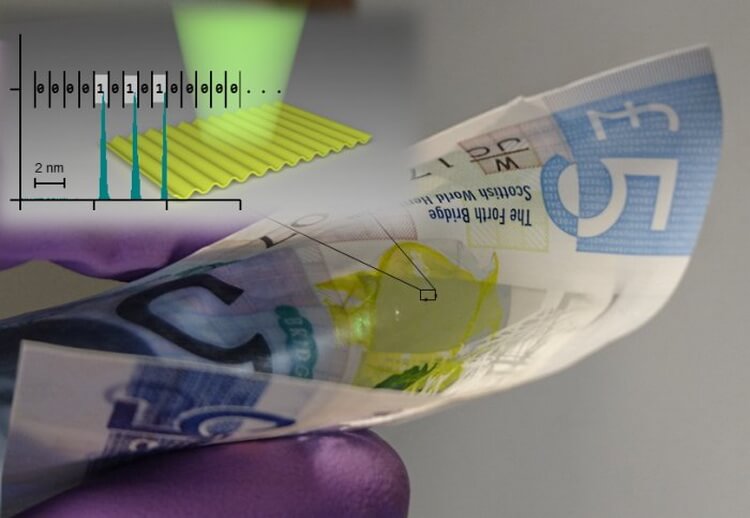
Scientists from St. Andrews University (Scotland) have created an ultra-thin flexible film capable of emitting laser light. The researchers conducted a successful test of contact lenses, demonstrating the real possibility to produce laser beams from his eyes. On the work done, the scientists reported in the journal Nature Communications.
Not in a hurry to run out and buy the visor of Cyclops. Laser beam, created this film is very weak and not able to cause any damage. And the technology, the researchers say, likely has potential use in creating wearable tags security or perhaps even as a sort of wearable barcode.
“We demonstrated the process of production and operation of low-power laser film, safe for organic applications, as well as having great flexibility and very light. Its physical properties, combined with the possibility of generating low-power laser beam with different parameters of the output spectrum, could be used for the production of security labels and apply to a variety of surfaces, including banknotes, contact lenses and nail,” say the scientists in the published article.
The film thickness is less than one thousandth of a millimetre. In addition, it is flexible, so it can be easily adapted for use, for example, polymer banknotes, or in soft plastic products, for example, the same flexible contact lenses.
As reported by portal IEEE Spectrum, the laser beam creates a film with imprinted in her thin polymer membrane of nanoscale gratings. According to scientists, the resulting membrane can then be integrated into other surfaces.
When illuminated by another laser, the film begins to emit its own laser beam with a wavelength of 420-700 nanometers, which is determined by the structure and material of the lattice. However, the researchers note that if desired, the settings can be customized to your needs, and then the film will emit its wave length and even emit a laser as a coded signal in the form of zeros and ones, as in the barcodes.

The diagram shows how the laser of the membrane can be used as protection against forgery in the polymer money Bank notes
Film created by the laser is very low power — about one NW. It is one billionth of a watt, which is very little even in order to create a barely visible light. But this power is enough for the laser beam recognized the scanner that opens the film for future use as the basis for the security tags, the researchers say.
“In this case will be very difficult to fake the laser beam with the desired wavelength” — says a senior researcher, physicist Malta Gater from St. Andrews University.
To verify that film, a team of scientists integrated the membrane in contact lenses, and then used it on the existing extracted eye of a cow (picture above). They are often used in these tests because they have similar structural features with the human eye. In addition, the lack of a test material in this case usually does not happen.
The work of the film is also checked by placing it on the nail one of the researchers. In both cases, the membrane produced laser beam, and, more importantly, his power was always in the safe zone, which suggests the possibility of its repeated use in the same contact lenses.
According to the developers, the transition from prototype to mass production of such a film it is possible to adjust without problems.
“Using newly developed technology, roll nanopaste and technology of organic printing ink, it is possible to mass-produce laser film at a low cost final product,” — said the scientists.
Well, finally! Created contact lenses, “shooting” laser
Nikolai Khizhnyak